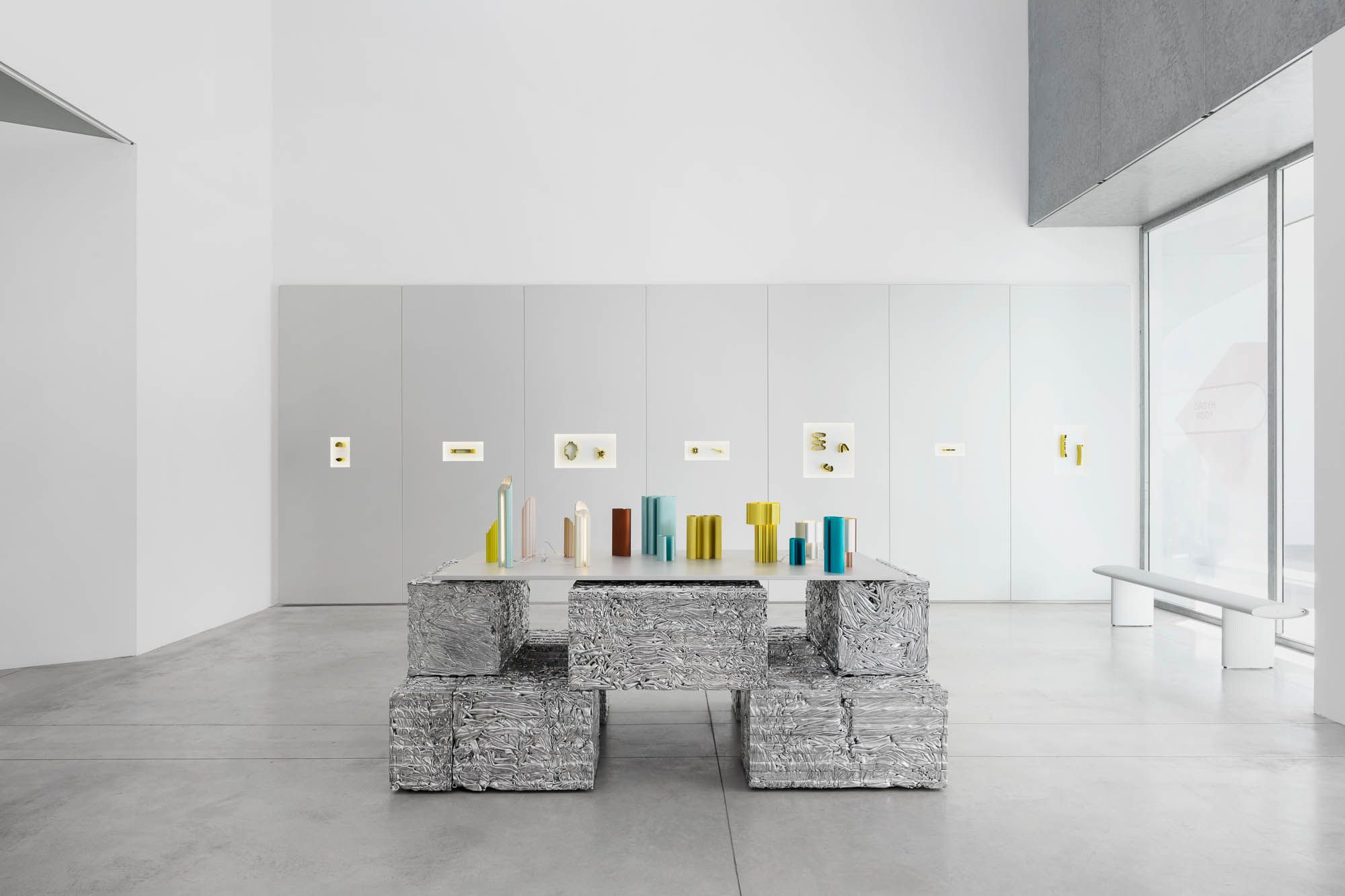
Milan Design Week 2024
18 Jul 2024
Trends
The annual Salone del Mobile Milano is the world’s leading design event, where global visitors flood the city for a week of product launches, parties and immersive experiences.

The epicentre of the week is the enormous Milan Fairgrounds in the north west of the city, where one can easily notch up twenty-thousand steps along the lengthy aisles in a single day. This is supported by a wealth of events across the city, from spectacular happenings in historic Villas and Palazzo’s, to more traditional showroom events from a wide selection of global design brands. There are also showcases from leading design education institutions, and a full programme at the Milan Triennale (the Design Museum) and the stunning Prada Foundation (the beautiful creation by Dutch architect Rem Koolhaas).
A number of key themes emerged this year; with the development, and use of, natural materials, or new composite materials of a sustainable nature, widespread. There was also a focus on design for a more flexible and dynamic kind of workplace, and many more projects that are seeking to solve questions around social connectivity and wellbeing.
Although these days there is nearly every type of product design on display in Milan, the traditions of this event are anchored in things to sit on, work at, or in objects that light up our world. In terms of upholstery, many of the key brands are now acknowledging that foam, an unsustainable petro-chemical based material, needs to be replaced by natural alternatives. An exquisite piece from Spanish designer Patricia Urquiola for Brazilian brand ETEL was a fine example, which uses biodegradable materials such as sugarcane bioplastic, wool and undyed cotton. The collection, called Naturalia, went further still by presenting side tables made from a new natural composite material; the resulting colour palette was muted and earthy.

In terms of social connectivity and wellbeing, it was the young minds of Design Week that were doing most to further the design discussion around social connectivity and wellbeing.
Many furniture companies presented new modular sofa systems that can be composed in multiple ways to accommodate changes in either workplace or home environments, yet many were too anonymous in design to hold much interest. A good example though was the Connect Modular Sofa, presented by Muuto from Sweden, in their well composed apartment on Via Solferino. Yet arguably the most accomplished workplace seating system on show was in fact a reissue from 1976 by US brand Herman Miller. The Wilkes Modular three-seater sofa, on display at their city centre showroom, was a strong example of how good design is essentially timeless.
In terms of social connectivity and wellbeing, it was the young minds of Design Week that were doing most to further the design discussion around social connectivity and wellbeing. A visit to the “Interdependence” exhibition, at the Fabbrica del Vapore Campus of the Politecnico di Milano, saw a range of projects on show from 50 international design schools. All sought to bring people and products together in new ways. From projects that looked at how to grow products from mycelium, to interventions on existing street furniture that created spaces for both friends and strangers to congregate, they were all full of promise and positivity. There was even a temporary indoor pétanque court, simply there to let visitors play together.

Across town at Spazio Orso, the masters students from ECAL University of Art and Design Lausanne also presented an equally inspiring project. Entitled Under Pressure Solutions, the project responds to today’s “deliver to your door” culture with a collection of pieces made from a biodegradable cellulose, created to be flat packed for delivery, then expanded to full size by the application of water by the end user. It sounds like science fiction, but the project, although early in testing, shows the potential to furnish people’s homes with useful objects that are aesthetically pleasing, cheap to buy, and have little or no negative effect on our environment.
This kind of integrated design thinking is what the world really needs. Young energised minds who consider what the true purpose for design is in the modern context. Their viewpoint seems to be that design must play a more relevant role in improving our homes and working spaces, while simultaneously bringing joy to the world, rather than damaging it. These kinds of ideas are likely to shape the future of Milan Design Week, and have the potential to shape a better future for us all.


